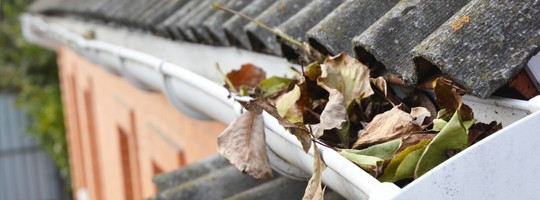To commission a roofing specialist to check drains, pipes and tiles, expect to pay a few hundred dollars, which will be money well spent, as problems on, or in, the roof have the potential to be very tricky and therefore costly to repair.
Don’t ‘Leaf’ it Too Late to Prepare for Winter
To commission a roofing specialist to check drains, pipes and tiles, expect to pay a few hundred dollars, which will be money well spent, as problems on, or in, the roof have the potential to be very tricky and therefore costly to repair.
The Bureau of Meteorology is predicting above-average rainfall in parts of southern Australia, yet many Australians can still expect a fair serve of cold and blustery days this winter, which will add to the wear and tear on their homes.
The colder months can take a toll on our homes, however with some preparation it’s possible to minimise the impact of wind, rain and cold. During autumn, leaves and other debris choke up the gutters and downpipes. This can lead to leaks, so it’s important that gutters and downpipes are cleared every twelve months.

When checking the drains, it’s also a good opportunity to look out for slipped or broken tiles, which will allow wet weather to seep into the ceilings and your home’s interior.
To commission a roofing specialist to check drains, pipes and tiles, expect to pay a few hundred dollars, which will be money well spent, as problems on, or in, the roof have the potential to be very tricky and therefore costly to repair.
Ignoring exterior paintwork, especially the eaves at the bottom edge of the roof, can also prove an expensive oversight. To ensure that exterior woodwork stands up to the rigours of winter – and summer for that matter – it’s critical that you apply a fresh coat of paint at least every four to five years, and more regularly if a property is close to the ocean.
If you take a DIY approach now, then it will cost only your time and a few tins of paint, although a professional house painter is also likely to uncover any potential problems that are not always apparent to the amateur tradesperson.
If you’re planning on using wood fires this winter, then a visit from a chimney sweep is a must, says Gerard Horton, Principal of the Sydney Chimney Sweep Company. If you’re using a wood fire, then you should arrange to have the chimney swept at least once a year to ensure the chimney is not blocked and there is no soot build-up.
For gas fires, make sure the flue outlet is not blocked or obstructed as this can prevent dangerous carbon monoxide from escaping your home. Mr Horton says depending on where you live, you can expect to pay $250 for a professional sweep of a chimney.
“This is often money well spent, as the last thing you want is a visit from the Fire Brigade responding to a fireplace that doesn’t work properly. Moreover, a faulty fireplace or chimney might also impact a home and contents insurance claim, which is another reason to seek the services of a chimney sweep.”
Moving inside the property, Jeremy Batten from Smoke Alarm Testing Service (SATS) advises owners to ensure smoke alarms are in good working order. “The smoke alarms in many new homes are wired into the mains electricity, however this doesn’t exempt them from the need for regular check-ups, while their backup batteries also need to be regularly replaced,” says Mr Batten. At the same time, the majority of older homes in Australia have battery-operated devices, says Mr Batten.
“This means owners need to be aware that batteries should be replaced a minimum of once a year, while the sensors built into the smoke alarm can tend to fail from about the ten-year mark, but in some cases it will be earlier than this. Whether you have one alarm or five in your property, SATS charges a smoke alarm inspection fee of $99 per property. As part of the review, our inspectors will clean all smoke alarms, replace batteries where required, check alarm expiry dates, verify they meet Australian standards and so on.”
I also advise those with gas heating to have appliances regularly maintained by a qualified and registered agent. Each state and territory has a statutory body responsible for the registration of gas fitters. A faulty heater can be the cause of a fire, while its fumes can also be dangerous to the inhabitants of a home.

Better Health Victoria recommends that a gas heater should be serviced immediately if there is a sign of trouble and every two years (before the winter heating season begins).
Source:12/4/16 Angus Raine http://www.therealestateconversation.com.au/blog/angus-raine/dont-leaf-it-too-late-prepare-winter/angus-raine/roofing


